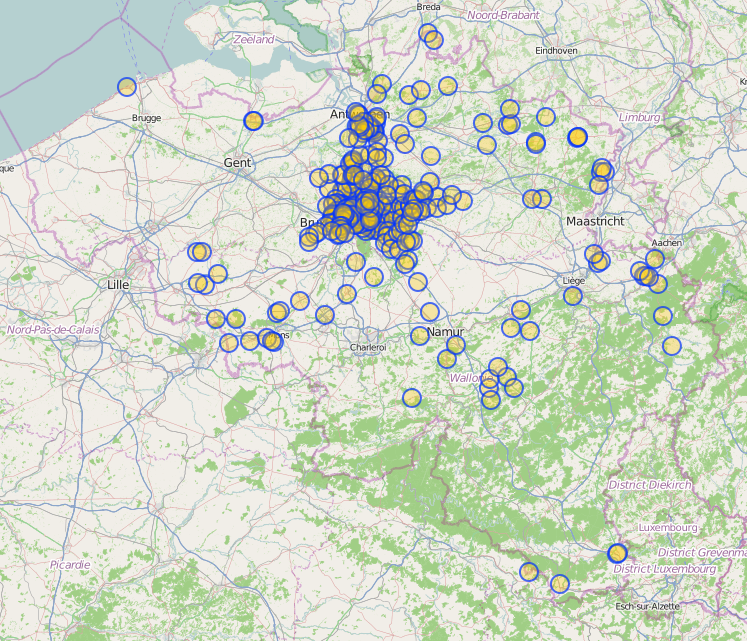The WW1 Western Front demarcation stones
Арахецна M!dgard 1 January 2025, мотт: English ТӀаьххьара карладаккхар 2 January 2025.Earlier today I OSM-stumbled upon a stele marking the western front line of the First World War in Belgium and France. In Dutch we apparently call them demarcatiepalen, a term which I find amusingly technical sounding. In French they’re often called les bornes Vauthier, named after the veteran who took the initiative of erecting them. Carved from pink granite, they stand about a metre tall. There’s a whole line of them, but I noticed that they could use a lot of work, so that became my project for this evening.
After a few hours’ work (including some distraction due to nearby unmapped stables), the 19 extant Belgian steles have all been found, added and homogenised in OSM and referenced to the database of Onroerend Erfgoed, the heritage agency of the Flemish government.

